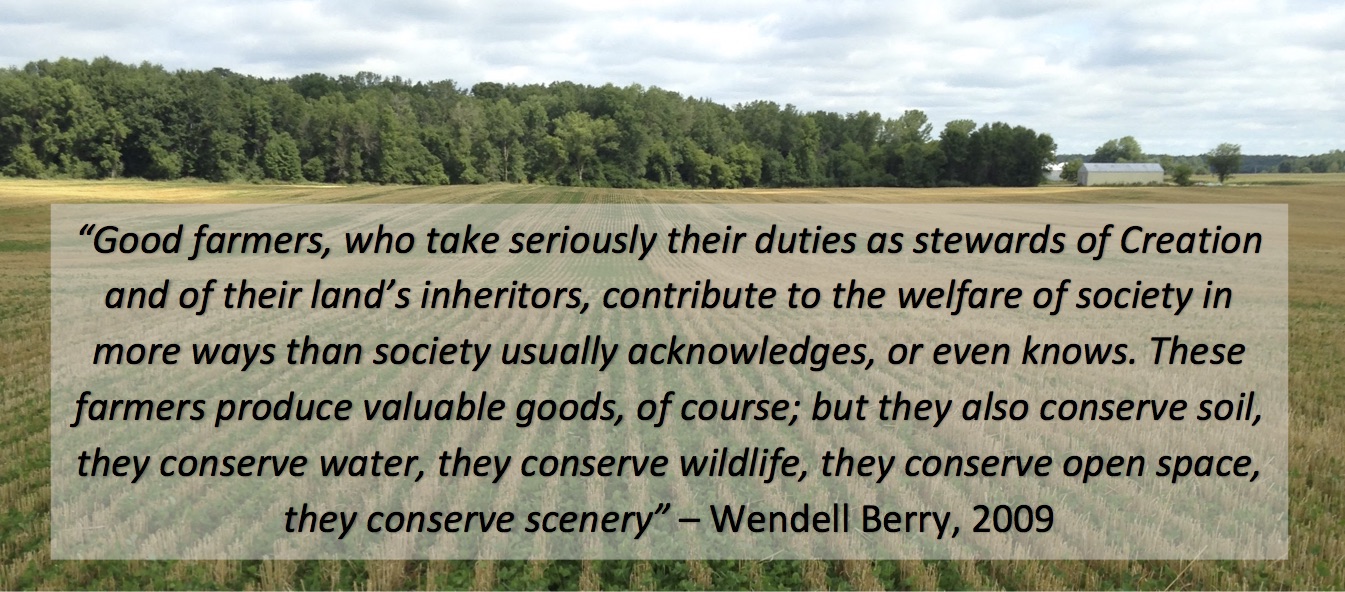
What is Conservation Agriculture?
While it is true that the strong agriculture presence in northeast Wisconsin has increased sediment and nutrient loading to local waterways, there are efforts underway to help minimize the impact of agriculture on our most valuable resource, the Fox River and bay of Green Bay. As a result of Great Lakes Restoration Initiative (GLRI) funding, the Natural Resource Conservation Service (NRCS) has accelerated its efforts to implement conservation practices throughout the Fox River Watershed (Image 1).

The Fox Demo Farms Network is working to demonstrate effectiveness and adaptability of conservation practice systems to reduce erosion and sedimentation, control phosphorus runoff, and address other nonpoint source pollution issues. Additionally, the Fox Demo Farms project is measuring the feasibility of implementing conservation practices on farms in northeast Wisconsin.

Conservation agriculture: Conservation agriculture is a collection of practices that are designed to create a high-quality soil structure and improve overall soil health (Image 2). The practices aim to protect soil from erosion and degradation, enrich soil quality and biodiversity, and increase infiltration rates, which reduces surface runoff and contributes to the preservation of water quality, all while maintaining or increasing crop production. The primary goals of conservation agriculture are:



